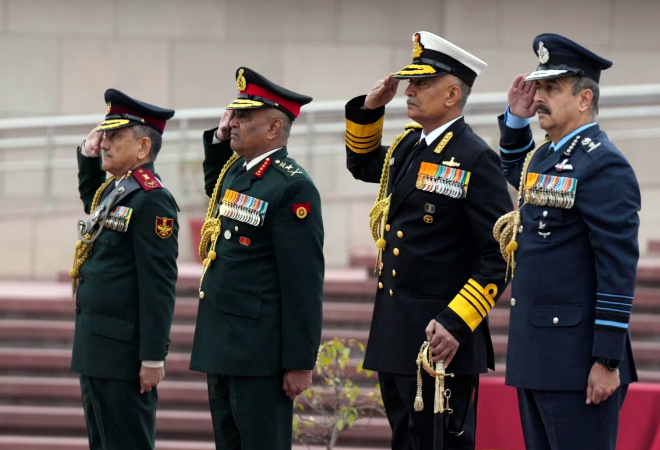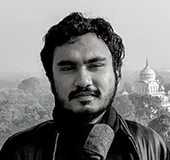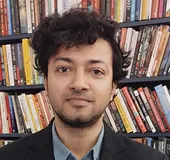-
CENTRES
Progammes & Centres
Location
Theaterisation in India might have to focus as much on joint assessments and integration towards Deep Air Support as on Close Air Support

India’s 77th Independence Day was marked amidst a growing sense that the most monumental reform of its higher order defence organisation and security policy is ‘on the anvil’. A number of recent developments signal that India’s armed forces are moving closer towards the creation of Integrated Theatre Commands. These include the Parliament passing a Bill to allow tri-services Commanders to take disciplinary action against any personnel under their command regardless of parent service, the Ministry of Defence’s (MoD) decision to allow cross-postings of officers amidst the three services, and the Chief of Defence Staff’s (CDS) announcement that the first Integrated Theatre Command (ITC) shall be established in Jaipur.
The decision to not divide the Indian Air Force’s assets and ditch the Air Defence Command, indicate that such an assurance may not be achieved to the Army’s satisfaction.
The new developments achieve desirable and noteworthy changes in the institutional apparatus and pertinent administrative processes, but there is less clarity on whether the key imperative of theaterisation (or jointness) has been addressed—that of assuring the Army of close air support (CAS) during the early stages of a conflict. The decision to not divide the Indian Air Force’s assets and ditch the Air Defence Command, indicate that such an assurance may not be achieved to the Army’s satisfaction. Hence, there is a need to not declare victory too early.
Theaterisation is expected to herald a number of benefits, including the removal of redundancies in command, reduction of obstacles to joint warfighting, streamlining decision making, etc. At the heart of it, however, it is an attempt to assure the Indian Army that the Indian Air Force (IAF) will support ground operations (Close Air Operations) during conflict and help in limiting casualties, boosting the morale of soldiers engaged in battle and helping in conducting operational planning prior to war.
Traditionally, the IAF has argued that such an ask could induce greater costs to IAF pilots and its dwindling assets. It also argues that air power is too important with ‘unique characteristics’ to be subsumed into a ‘supporting’ role—a lesson learnt by the United States (US) Army during ground-led joint operations in North Africa during the Second World War. The Air Force prioritises Deep Air Support operations (DAS or interdiction) whereby it can target enemy aircrafts, supply lines, logistic bases, and key supporting infrastructure that are not in proximity to the battle but has the power to sap the power of ground forces engaged in battle, and, thereby, transform the broader contours of the conflict. It is this ability to curate a centralised (undivided) approach towards the optimal employment of air power during a conflict that the IAF fears will be nibbled away by theaterisation. One strain of thought is concerned that handing over air assets to ground forces will inevitably lead to over-use of air power to meet tactical battleground objectives at the cost of over the horizon strategic objectives—a combination that leads to both military defeats in the longer term as well as debilitated airpower.
The Air Force prioritises Deep Air Support operations (DAS or interdiction) whereby it can target enemy aircrafts, supply lines, logistic bases, and key supporting infrastructure that are not in proximity to the battle but has the power to sap the power of ground forces engaged in battle, and, thereby, transform the broader contours of the conflict.
The Army is less swayed by this imperative as it is more concerned with ensuring the availability of air assets for effective support to ground operations without having to look back over its shoulders for assets and directions. Hence, effectively, the IAF’s preferred approach is stronger ‘co-ordination’ between the services whereas the Army seems to be batting for ‘jointness’ and ‘integration’. The Army argues that, as broad as the IAF’s charter and role may be, it is still required to cater to the imperatives of narrower and more tactical ground combat. This is because larger strategic objectives are as influenced by key tactical victories in limited areas as they are by over the horizon operations.
It is a well-known quip that generals prepare to fight the last war. When it comes to the issue of joint warfighting in the Indian context, much of the disagreements and debate between the services emanate from less-than-ideal experiences in previous wars.
In the Army’s view, it has suffered excess losses during conflicts or even lost national wars due to lack of sufficient air power, exemplified by the 1962 war with China and Kargil in 1999. The 1971 war, on the other hand, is cited as a positive example of the Army’s ability to deliver astounding results if it is supported by the IAF. Ironically, the Air Force sees the same war as one in which it incurred unwise and excessive losses—anti-aircraft fire amounted to just over 42 percent of the IAF’s losses in 1971, while this figure was closer to 14 percent in the 1965 war. The then Air Chief in 1971 sought to incorporate some lessons from 1965 and prioritise ground support missions (with the IAF also having a relatively larger combat fleet than in 1965). The resultant higher percentage of losses in an air defense rich environment ended up furthering the IAF’s view that such a focus on CAS is a waste of assets.
The Air Force sees the same war as one in which it incurred unwise and excessive losses—anti-aircraft fire amounted to just over 42 percent of the IAF’s losses in 1971, while this figure was closer to 14 percent in the 1965 war.
Moreover, the IAF tends to argue against CAS based on it having limited air assets. Although valid to a degree, its real concerns are somewhat deeper and pertain to loss-aversion. These concerns pertain to the service’s role in a war, the need to preserve valuable assets and pilots (regardless of overall numbers), as well as a lack of confidence in the Army’s ability to ‘direct’ air power prudently.
The Indian Army’s less-than-ideal experiences in securing close air support during the Kargil war—achieved after almost three weeks after war initiation and much controversy—feeds into its present search for institutionalised assurances that are beyond tacit agreements. To the IAF, the Army’s failure to include the Air Force during operational planning prior to the war, and uncharitable assessments of the Army’s operational and tactical choices in the early stages of the conflict, reinforced the idea that the Army may not be trusted with the commandeering of air assets.
The intellectual deadlock between the two service views require civilian-led arbitration—a point alluded to by Gen. MM Naravane (the last Army Chief) in his call for a National Security Strategy to determine the contours of any future theaterisation architecture.
The divide itself, after all, has grown along with the potential of an India-China conflict, which shall feature mountainous terrain, necessitating an infantry heavy approach. The same terrain makes the IAF’s CAS operations risky while yielding more limited gains than operations along the India-Pakistan front. The IAF’s traditional preference for interdiction operations (as reflected in its new doctrine) is also riddled with challenges owing to a well-networked and modernised PLA Air Force with strong air defence capabilities. The IAF might prioritise the defence of forward bases, cities and its own assets during the early stages of a conflict, leaving ground forces with insufficient guarantees with regard to air cover and CAS.
The same terrain makes the IAF’s CAS operations risky while yielding more limited gains than operations along the India-Pakistan front.
Such challenges are possibly only augmenting the Army’s doubts with regard to the IAF’s readiness to ‘support’ ground operations in a time of crisis/conflict. During the Kargil war, the IAF did not have to contend with the Pakistan Air Force as the latter did not join battle. In a future war with China, such a luxury is unlikely. Joint training by the PLAA and the PLAAF in Close Air Support, with PLAAF personnel embedded in Army units as ‘guides’, indicate the PLAAF’s increasing ability to ‘support’ ground forces in battle. The PLAAF’s changes in posture along the Line of Actual Control reinforce the same trend. In so far as we would like to value lessons from the ongoing Russia-Ukraine war, the effect of Stinger missiles and mobile ground-based air-defence systems on deterring the Russian Air Force from undertaking CAS does not bode well for the future of such operations—an insight increasingly appreciated by militaries. Ironically, then, theaterisation in India might have to focus, in the future, as much on joint assessments and integration towards DAS (interdictions) as on CAS.
Hence, cross-service postings as well as consensus (at higher levels) on the use of air power at each rung of the escalation ladder during conflict, is imperative. However, a theaterisation process that focuses on institutions, procedures and regulations (hardware) without proportionate focus on bridging the intellectual divide (software) could risk falling between two stools—staying short of jointness while eroding ‘co-ordination’. Intellectual convergence needs to march in tune with institutional adaptations, to prevent any lingering divergence from adversely affecting the whole process.
Ever since the last public spat between the services over the first CDS Gen. Bipin Rawat’s characterisation of the IAF as a ‘support arm’ to the Army within theaterisation, it does appear that the services have gone into a huddle and taken a more discreet approach towards negotiating the various aspects of future theaterisation. In this regard, it will be interesting to see whether the final blueprint of theaterisation is able to address the Army’s need for assurances for institutionalised Close Air Support during conflict. Much would depend on whether Theatre Commanders would have direct control over air assets or whether such control would be ‘guided’ by the Air force.
The views expressed above belong to the author(s). ORF research and analyses now available on Telegram! Click here to access our curated content — blogs, longforms and interviews.

Bashir Ali Abbas is a Research Associate at the Council for Strategic and Defense Research, New Delhi. He is also a South Asia Visiting Fellow ...
Read More +
Sidharth Raimedhi is a Fellow at the Council for Strategic and Defense Research New Delhi and holds a PhD in International Politics from Jawaharlal Nehru ...
Read More +